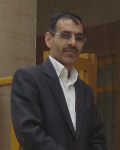| نویسندگان | مفید شاطری,احمد رومیانی,تقی ابراهیمی سالاری,حمیده محمودی |
|---|
| نشریه | Acta Universitatis Carolinae, Geographica |
|---|
| شماره صفحات | 205-219 |
|---|
| شماره سریال | ۱ |
|---|
| شماره مجلد | ۳۵۶ |
|---|
| نوع مقاله | Full Paper |
|---|
| تاریخ انتشار | ۲۰۲۱ |
|---|
| رتبه نشریه | ISI |
|---|
| نوع نشریه | الکترونیکی |
|---|
| کشور محل چاپ | جمهوری چک |
|---|
| نمایه نشریه | Scopus |
|---|
چکیده مقاله
This article evaluates nine rural districts in Kuhdasht county, Iran, with a population of 3535 between 2013–2016. We address the following two questions: First, what are the most important criteria and effective indicators in the rural population’s quality life enhancement? Second, is there any significant relationship between the public space indicators and quality life enhancement in the case study area? Six factors, including perceptual vision, buildings skeletons, culture and communities, activities, social interaction, and the environment from local peoples’ perspectives, explained 52.6 percent of the total variable variances. The Friedman test showed a significant difference among criteria of esthetics, semantic-perceptual, and activity-based functional at the alpha level of 0.01. The fitting growth regression model showed that the positive effect of the public space indicators on the rural population’s vitality and dynamism quality enhancement was about 0.723, indicating a significant relationship between them. It also stated a vital role of public space indicators in the rural population’s vitality and dynamism quality enhancement in the study area. The most important indicators were those of economic, social, and cultural dynamism and the body and space indicators.
لینک ثابت مقاله
